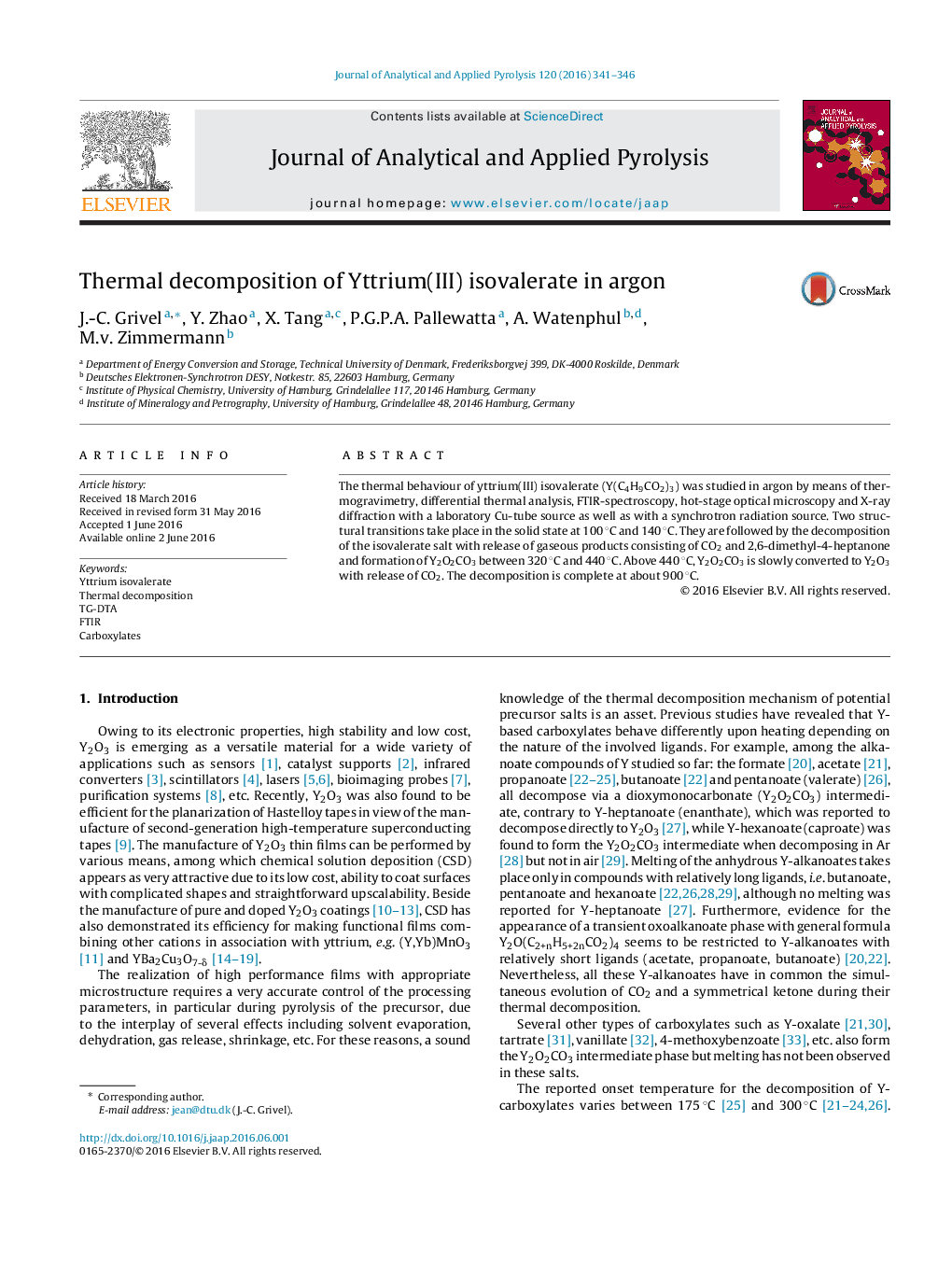| کد مقاله | کد نشریه | سال انتشار | مقاله انگلیسی | نسخه تمام متن |
|---|---|---|---|---|
| 1196560 | 1492957 | 2016 | 6 صفحه PDF | دانلود رایگان |

• Yttrium(III) isovalerate Y(C4H9CO2)3 was prepared and characterized.
• Y(C4H9CO2)3 does not melt between 40 °C and 110 °C prior to decomposition.
• Decomposition occurs at a 20 °C higher temperature than for Yttrium(III) valerate.
• CO2 and C9H18 (2,6-dimethyl-4-heptanone) are released during the decomposition.
• The decomposition of Y(C4H9CO2)3 to Y2O3 proceeds through Y2O2CO3.
The thermal behaviour of yttrium(III) isovalerate (Y(C4H9CO2)3) was studied in argon by means of thermogravimetry, differential thermal analysis, FTIR-spectroscopy, hot-stage optical microscopy and X-ray diffraction with a laboratory Cu-tube source as well as with a synchrotron radiation source. Two structural transitions take place in the solid state at 100 °C and 140 °C. They are followed by the decomposition of the isovalerate salt with release of gaseous products consisting of CO2 and 2,6-dimethyl-4-heptanone and formation of Y2O2CO3 between 320 °C and 440 °C. Above 440 °C, Y2O2CO3 is slowly converted to Y2O3 with release of CO2. The decomposition is complete at about 900 °C.
Journal: Journal of Analytical and Applied Pyrolysis - Volume 120, July 2016, Pages 341–346